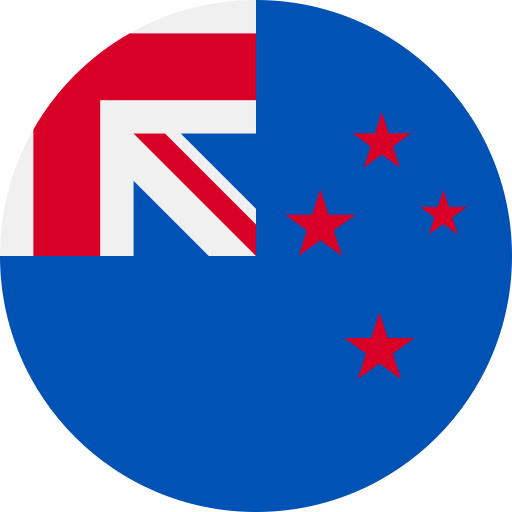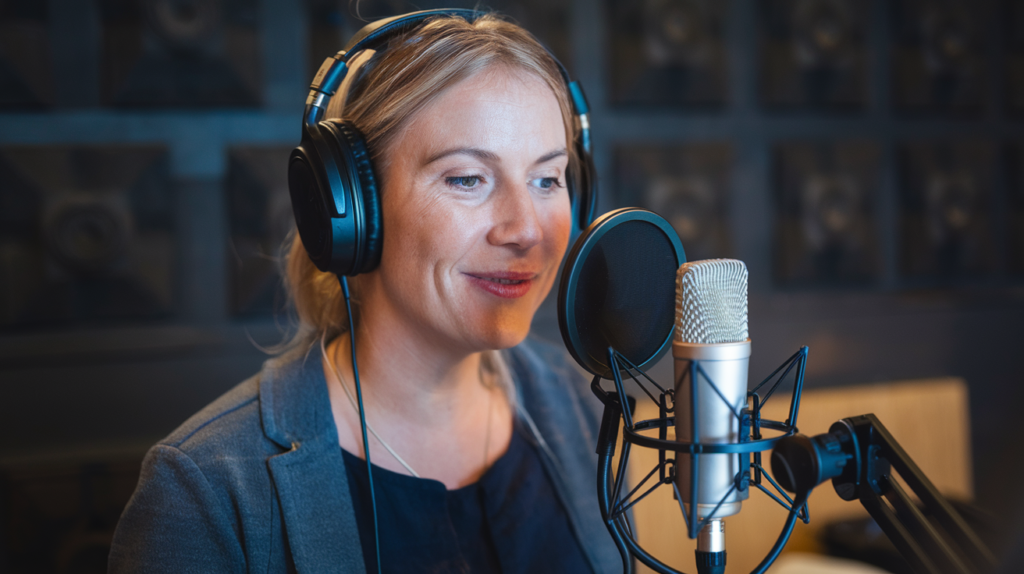Key Takeaways
- Rising Demand for Inclusivity: The increasing presence of New Zealand Sign Language (NZSL) in media highlights the growing commitment to inclusivity and diverse representation, bridging gaps between hearing and Deaf communities.
- Cultural Significance: NZSL is an official language of New Zealand that embodies a rich cultural history, making its inclusion in media essential for celebrating and validating Deaf culture.
- Television and Online Growth: Mainstream platforms are incorporating NZSL through interpreters in broadcasts and dedicated content designed for Deaf audiences, enhancing visibility and understanding among all viewers.
- Challenges to Inclusion: Despite the positive trends, challenges such as limited resources for authentic sign language representation and audience awareness hinder effective integration of NZSL into mainstream media.
- Future Trends: The future looks bright for NZSL as technology advances; expect more live interpretations, original series featuring sign language, and collaborations with Deaf creators to foster genuine storytelling.
Have you ever wondered how often New Zealand Sign Language appears in media? As the demand for inclusivity grows, so does the need for diverse representation, including sign language. With a rising awareness of accessibility, New Zealand Sign Language is carving out its space in television, film, and online platforms.
This shift isn’t just about visibility; it’s about connection. By integrating New Zealand Sign Language into mainstream media, creators can bridge gaps between hearing and Deaf communities. You’ll discover that this demand reflects a broader societal change towards embracing all forms of communication. So why should you care? Understanding this trend not only highlights the importance of inclusivity but also showcases how media can evolve to reflect our rich tapestry of cultures and languages.
Overview of New Zealand Sign Language
New Zealand Sign Language (NZSL) is one of the official languages of New Zealand, recognized for its unique structure and cultural significance. Used predominantly by the Deaf community, NZSL embodies a rich history and serves as a vital form of communication. This language incorporates various elements like hand shapes, facial expressions, and body movements to convey meaning effectively.
The importance of NZSL extends beyond communication; it fosters connections among diverse communities. As media increasingly features NZSL—such as in television programs or online videos—it enhances visibility for Deaf individuals and promotes inclusivity within society.
Incorporating NZSL into mainstream media not only validates the experiences of Deaf people but also educates hearing audiences about this vibrant language. The growing demand for representation reflects a broader societal shift towards embracing all forms of expression. By integrating sign language into various formats, media outlets contribute to breaking down barriers between different cultures while enhancing accessibility.
Understanding the nuances and rich context of NZSL helps you appreciate its role in fostering better communication across communities. The rise in its presence signals an ongoing commitment to diversity that resonates with audiences from all backgrounds.
Current Media Landscape
The media landscape for New Zealand Sign Language (NZSL) is evolving rapidly, showcasing a commitment to inclusivity and diverse representation. This shift reflects a broader understanding of the importance of accessibility in communication.
Television
Television plays a pivotal role in increasing the visibility of NZSL. Many local networks now include sign language interpreters during news broadcasts and public announcements, making information accessible to the Deaf community. Programs specifically designed for Deaf audiences feature NZSL prominently, allowing viewers to engage fully with content. In addition, some popular shows incorporate NZSL as part of their storytelling, helping hearing audiences appreciate its cultural significance while fostering connections between communities.
Online Platforms
Online platforms significantly contribute to the demand for NZSL in media. Video-sharing sites host various content featuring sign language interpretation or instruction, catering to both Deaf individuals and those interested in learning NZSL. Streaming services increasingly offer programs that include sign language options or dedicated content aimed at Deaf viewers. Social media channels amplify this trend by providing spaces where users share personal stories and educational resources related to NZSL, creating an engaged community that values representation and connection across different backgrounds.
This growing presence of NZSL in television and online platforms not only enhances visibility but also promotes understanding among all audiences.
Factors Driving Demand for New Zealand Sign Language in Media
The demand for New Zealand Sign Language (NZSL) in media is rising due to several key factors. This increase reflects a commitment to inclusivity and representation across various platforms.
Accessibility and Inclusion
Accessibility plays a crucial role in driving the demand for NZSL. As media outlets strive to reach diverse audiences, incorporating sign language ensures that Deaf individuals can engage with content meaningfully. Providing NZSL interpretation during broadcasts or creating dedicated programs empowers viewers who use sign language as their primary mode of communication. Such initiatives foster an environment where everyone has equal access to information, entertainment, and education.
Incorporating NZSL not only enhances accessibility but also promotes a culture of inclusion. When you see familiar signs on your screen, it sends a message that Deaf voices matter. This connection between hearing and Deaf communities enriches everyone’s experience, making media more relatable and engaging.
Cultural Representation
Cultural representation significantly drives the integration of NZSL into media forms. By showcasing sign language, creators highlight the richness of Deaf culture while educating hearing audiences about its nuances. Representation matters; when you include NZSL in television shows or online content, you’re celebrating diversity and validating the experiences of Deaf individuals.
Moreover, featuring authentic sign language use acknowledges its cultural significance as one of New Zealand’s official languages. As narratives evolve within mainstream media, they increasingly reflect the lived realities of all communities—this includes portraying characters who communicate using NZSL authentically. The visibility fosters understanding among different groups while enriching storytelling through varied perspectives.
By focusing on accessibility and cultural representation through NZSL in media, we’re witnessing a shift towards greater awareness and appreciation for diverse modes of communication that enhance societal connections.
Challenges in Incorporating Sign Language
Incorporating New Zealand Sign Language (NZSL) into media faces several challenges that affect its effective integration. These challenges range from production limitations to audience awareness.
Production Limitations
Producing content that includes NZSL involves unique constraints. Limited access to skilled sign language interpreters or native signers can hinder the authenticity of portrayals. Many productions lack the necessary resources, such as adequate budgets and time, to include proper sign language representation. Filmmakers and broadcasters often prioritize voiceover talent over incorporating NZSL due to perceived complexities. This choice can lead to missed opportunities for authentic representation of Deaf culture.
Moreover, technical aspects present hurdles as well. Capturing high-quality video of sign language must consider factors like camera angles and lighting, which may not be primary concerns for standard voiceover work. If these elements are overlooked, the impact of NZSL on viewers diminishes significantly.
Audience Awareness
Audience awareness plays a crucial role in the successful incorporation of NZSL in media. Many viewers may not fully understand or even recognize the importance of including sign language alongside spoken dialogue or voiceovers. Without proper education about NZSL’s significance, audiences miss out on appreciating this rich form of communication.
Engaging with Deaf communities offers valuable insights into their experiences and expectations from media representations. When creators collaborate directly with these communities, they foster greater understanding and appreciation among broader audiences. Increased visibility of NZSL encourages hearing viewers to learn more about Deaf culture while promoting empathy through shared narratives.
Enhancing audience awareness requires consistent efforts across various platforms—social media campaigns and community outreach programs serve as effective methods for raising awareness about the significance of incorporating NZSL in mainstream media.
Future Trends in Media and Sign Language
The future of New Zealand Sign Language (NZSL) in media looks promising, driven by a surge in demand for inclusivity and representation. As technology evolves, more platforms will integrate NZSL into their content strategies. Expect to see an increase in live broadcasts featuring sign language interpreters, allowing real-time access for Deaf individuals during news segments and events.
Online streaming services are likely to embrace NZSL even further. With audiences craving diverse storytelling, incorporating NZSL into original series can enhance viewer engagement and broaden cultural understanding. This integration fosters a sense of belonging among Deaf viewers while educating hearing audiences about the depth of Deaf culture.
Social media is another frontier where NZSL is set to thrive. Short-form video platforms will continue showcasing creative content that features sign language use, connecting communities through shared experiences. The rise of influencers using NZSL can amplify its visibility, making it more relatable and accessible to younger generations.
Collaboration between media producers and Deaf creators will also shape future trends. By involving native speakers in production processes, content becomes authentic and resonant with the community’s lived experiences. Such partnerships ensure that narratives reflect genuine perspectives rather than superficial representations.
Addressing challenges remains crucial as well. Production teams must prioritize training on effective camera angles and lighting techniques that best capture sign language interpretation. Enhancing audience awareness about the importance of including NZSL alongside spoken dialogue creates a richer viewing experience for everyone involved.
Ultimately, the combination of technological advancements and societal shifts toward inclusivity positions NZSL as an integral part of New Zealand’s media landscape moving forward.
Conclusion
The demand for New Zealand Sign Language in media is reshaping how audiences engage with diverse cultures. As more platforms embrace inclusivity, you can expect a richer representation of Deaf voices and experiences. This shift not only enhances accessibility but also fosters understanding among hearing viewers.
With technology advancing rapidly, there’s potential for even greater integration of NZSL into various content forms. Collaborations between media creators and the Deaf community will ensure authentic narratives that resonate deeply. By prioritizing these efforts, the media landscape can truly reflect the vibrant tapestry of New Zealand’s cultural identity, making it a space where everyone feels valued and represented.
Frequently Asked Questions
What is New Zealand Sign Language (NZSL)?
NZSL is one of New Zealand’s official languages, primarily used by the Deaf community. It has a unique structure that combines hand shapes, facial expressions, and body movements to convey meaning effectively.
Why is NZSL becoming more prominent in media?
The increasing presence of NZSL in media reflects a growing demand for inclusivity and representation. Media outlets aim to enhance accessibility for Deaf individuals while educating hearing audiences about this vibrant language and culture.
How does NZSL promote inclusivity?
Incorporating NZSL into mainstream media ensures that Deaf individuals can engage with content meaningfully. It fosters an inclusive environment, validating Deaf voices and enriching the overall media experience for everyone.
What challenges exist in integrating NZSL into media?
Challenges include production limitations like access to skilled interpreters and technical aspects such as lighting and camera angles. Additionally, audience awareness of the importance of including NZSL alongside spoken dialogue needs improvement.
What role does technology play in the future of NZSL in media?
Technology will facilitate greater integration of NZSL across various platforms, including live broadcasts and streaming services. This evolution enhances viewer engagement while promoting cultural understanding through original series featuring sign language.
How can collaboration improve representation of NZSL in media?
Collaboration between media producers and Deaf creators can lead to authentic narratives that resonate with the community’s experiences. This partnership ensures that stories reflect the lived realities of both hearing and Deaf audiences effectively.







